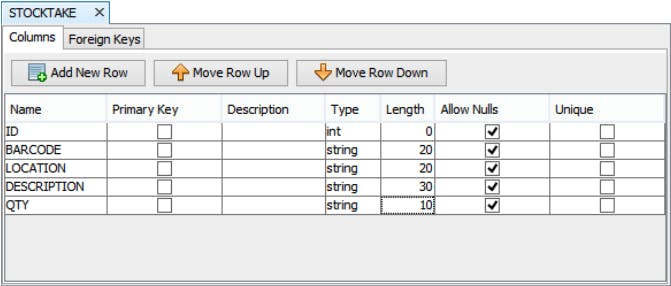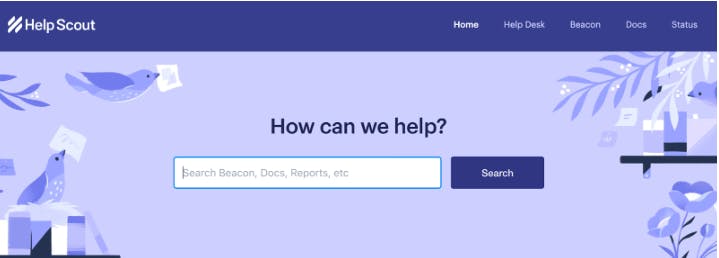How to Create and Organize a Knowledge Base


Documentation is often one of the first ways your users interact with your brand outside of using your product directly. If it's a poor first impression, it may leave your potential customers looking for alternatives. Optimizing your knowledge base is essential to ensuring that your customers can find the information they need when they need it.
In this post, we'll cover how to organize a knowledge base to ensure that your customers are never left confused or looking for something else. We'll also look at how to use knowledge bases internally and externally to ensure every question is answered.
What is a knowledge base?
A knowledge base is a collection of documentation or resources used to convey information to a group of people. There are two main types of knowledge bases: internal and external. Both categories may be made up of a variety of content types like text-based articles, videos, and graphics.
Many companies use external knowledge bases to help scale their customer service efforts or to proactively teach users skills or answer questions. Things like “how to” articles or FAQ pages are common examples of external knowledge base resources.
Internal knowledge bases help share employee knowledge, both historic and new, and can also be beneficial for cross-functional work. Internal knowledge bases usually focus more on business processes like submitting an expense report or requesting time off.
What are the benefits of a knowledge base?
There are many ways that knowledge bases can be helpful to your customers, but they are also beneficial to your company.
Give customers what they prefer
Research shows that most people prefer to find their own answers before they reach out for help. The first thing they do is look for documentation by searching online. With a knowledge base, your information will be the first thing that shows up.
Scale your efforts
Knowledge bases can help deflect incoming conversations from your support inbox. Customers don't need to reach out to you if they've already found the answers they’re looking for. With fewer conversations coming through the inbox, your team can focus on projects that have a higher impact or feel more fulfilling. A knowledge base also provides your support team with additional resources to share with your customers, making it easier and quicker to send excellent responses.
Promote knowledge sharing
Even the best companies lose employees every once in a while. When you have either an internal or external knowledge base, you keep all the learnings of your team members permanently, even after they leave. Similarly, knowledge is much easier to share across time zones and teams.
Deliver contextual knowledge
Knowledge bases allow you to provide education to your customers in context. For instance, if you have documentation about a specific feature, you can include a link to the knowledge base page within your product. That way, if someone is confused or running into trouble, they can navigate directly to your knowledge base rather than searching for it themselves.
Train more quickly
With ready-to-read documentation, your team members can find the information they need to get up and running quickly. Instead of relying on an individual to share their knowledge one-on-one with new team members, you can encourage folks to read various areas of your documentation. If it's good for teaching customers, it's suitable for teaching employees, too.
Remain consistent
When you create things like style guides and internal documentation, it helps promote consistency with your team members' responses to users. Everyone knows what to say and the protocols for specific situations. This level of consistency takes stress off your employees' shoulders and provides a better customer experience for the people reaching out to you.
Support remote employees
Some folks find it tricky not to have physical coworkers that they can walk up to and talk with or ask questions. In some cases, internal knowledge bases can fill that role. They make it easy for folks to find any information they may need, even if there's no one around to answer their questions directly.
What is the difference between a database and a knowledge base?
Databases are familiar to many individuals, whereas knowledge bases may feel foreign. While the two are similar in that they both store information, that's where the similarities end.
Databases are repositories for raw data and usually look something like this:

Conversely, knowledge bases are repositories for learning and documentation and often look something like this:

Your company should likely have both databases and knowledge bases. You may even include all of your database information in a CRM that you use to organize information about your customer relationships. A knowledge base will often have a much more comprehensive selection of information than a database would.
What should you include in a knowledge base?
Depending on your business model and what you want to accomplish, you may include different information in your knowledge base.
Here are a few cases you may consider when conceptualizing your knowledge base:
Are you designing your knowledge base for internal or external use?
Do you want your knowledge base to be relevant to your customers and anyone looking to work in your field?
Do you want your documentation to be used by humans or crawled by machines?
No matter who you are trying to reach with your content, there are usually a few different types of documentation that go well in knowledge bases:
Frequently asked questions (FAQs)
Lists and step-by-step instructions
“Getting started” articles
Videos and webinars
Glossaries and definition lists
Your knowledge base should include a balance of these things, pending the engagement you see from your customers. If you notice that the people using your docs regularly rank one form of content over another, it may be worth considering using that type of content more frequently than others.
How do you structure content in a knowledge base?
No matter what type of content you put into your knowledge base, it won't be helpful if your users aren't able to use and understand it. How you present and structure your information is just as important as the type of information you include.
Use a consistent template
When you design your knowledge base articles to follow the same template, you subconsciously signal the reader where to go. When they see a familiar page style, they know where to look for the information they are hunting for and can quickly parse what you are trying to convey.
Use subtitles and headers
Subtitles and headers are typically stylistically differentiated from the rest of the content. Use subtitles and headers to break up your content and make it easy for individuals to quickly get the lay of the land when they arrive at a knowledge base article.
Use lists and short paragraphs
The quicker a reader can scan a document to find the information they are looking for, the better. Break down your content into smaller sections, and, along with subtitles and headers, use lists and short paragraphs to make it easy for individuals to read through quickly and find the answers to their questions.
Use keywords to optimize search
In order to be effective, your knowledge base needs to be searchable. Keywords are an integral aspect of your knowledge base articles' searchability (and crawlability). Using keywords that make sense for your users makes the built-in search functionality of your docs much more effective. It also makes it better for search engines, like Google or Bing, to better index your pages and serve them up as search results.
Use multimedia
Not everyone learns best by reading. Some of your users may learn best through videos or graphics or by doing it themselves. Use images, videos, and lists to help reach all different types of learners and visually break up the content. Varying types of content will make your knowledge base articles easier to read and more visually appealing.
How to organize a knowledge base
After you've written the content and templated the individual articles you are going to include, it's time to organize your knowledge base at the top level. The most important thing to remember about organization is to prioritize it for your readers.
Take care to assess how you can best serve your readers regularly, and use that to direct your knowledge base strategy. There are a few other fundamental principles that are also important to keep in mind.
Identify straightforward, top-level folders
There are a few different ways that you can organize your top-level folders. What method you choose should be dictated by what type of product you offer and how your customers use it. Here are a few ways you might choose to arrange your top-level folders:
By product type: For example, if you're a water bottle company, each of the different water bottles would have a separate top-level folder.
By feature: If you’re a website design company, you may have one folder for your HTML editor and another for your SEO functionality.
By user type or role: One folder may be for account admins and another for primary users.
By activity: If you’re an email design company, you could have one section for people designing emails and another for those writing them.
By stage in the user journey: One section of your knowledge base may be for onboarding and another for established customers.
Create linked and related content
When organizing your content, creating a section for linked and related articles helps develop an accessible web for your users to follow for information. Beyond that, it leads to a natural grouping of articles, making your knowledge base much easier to navigate. Suggesting content for your users also allows them to learn proactively, rather than actively having to seek information out.
Use colors and styling for differentiation
Much like the subheaders and titles on individual knowledge base article pages, using colors and styling on the folders and larger sections within your knowledge base can be helpful for your users. If you were creating a stage-based organization strategy, you could have onboarding documentation themed with an orange hue and established customers with purple. This visual representation lets your users quickly know when they have transitioned across content topics.
Consider accessibility
When organizing your documentation at the top level, consider accessibility tools that may need to work with your methodology. For instance, are screen readers able to navigate your headers and subheaders? Would visually impaired folks be able to see the colors on your pages? Keep these things in mind and try to optimize for accessibility.
Let your knowledge base work for you
With the amount of deflection that some knowledge bases can achieve, your documentation may feel like it's working as hard as one of your team members. With a well-organized and well-written knowledge base, your customers will feel supported, and your team can focus on higher-impact work out of the queue. Remember to update your knowledge base regularly and maintain your structure and organization, and you’ll be on your way to self-service heaven!
The Supportive Weekly: A newsletter for people who want to deliver exceptional customer service.


